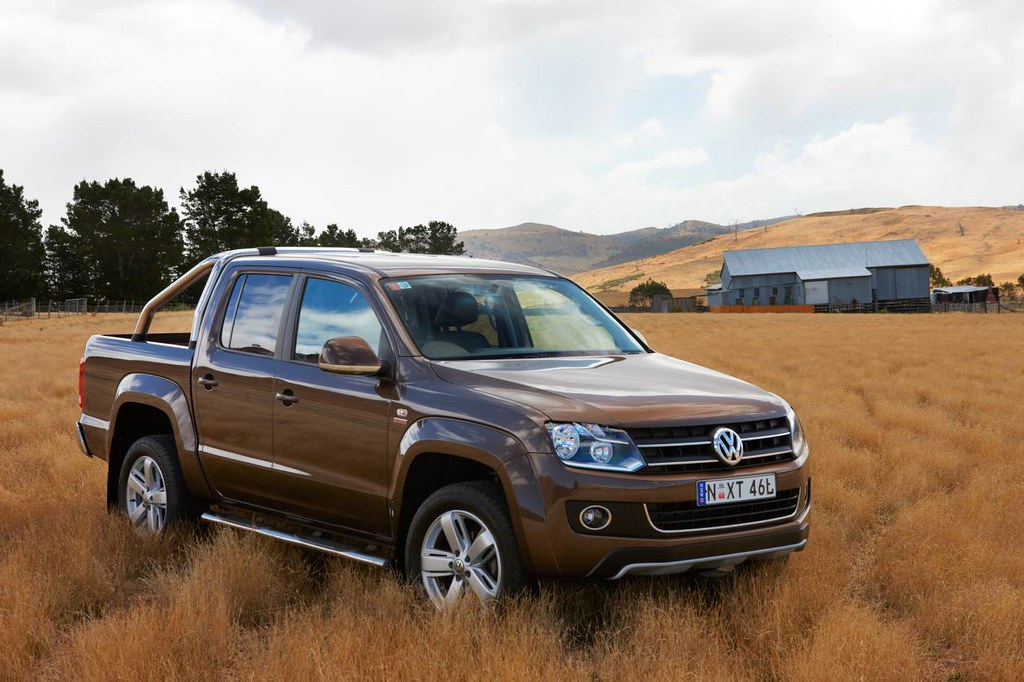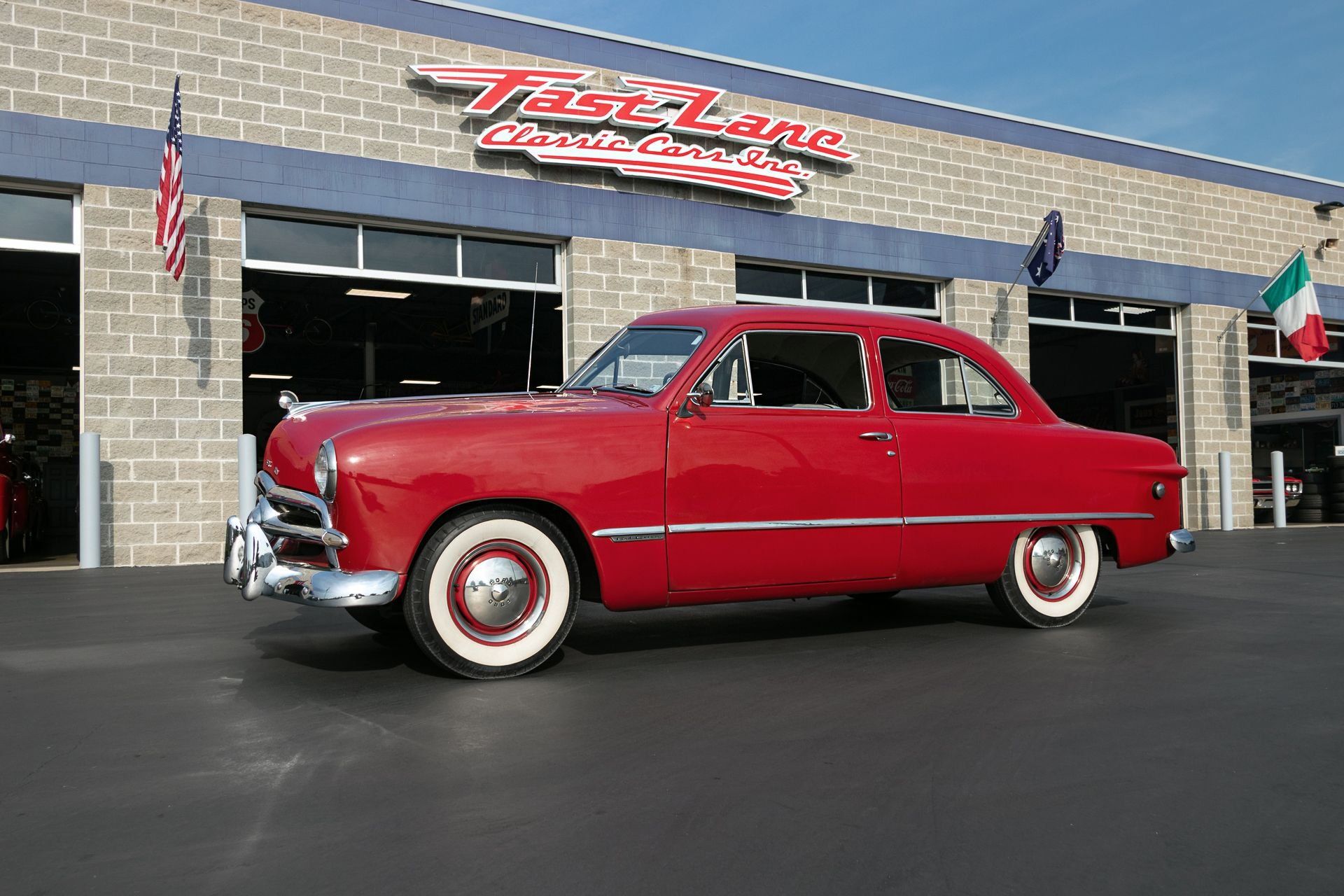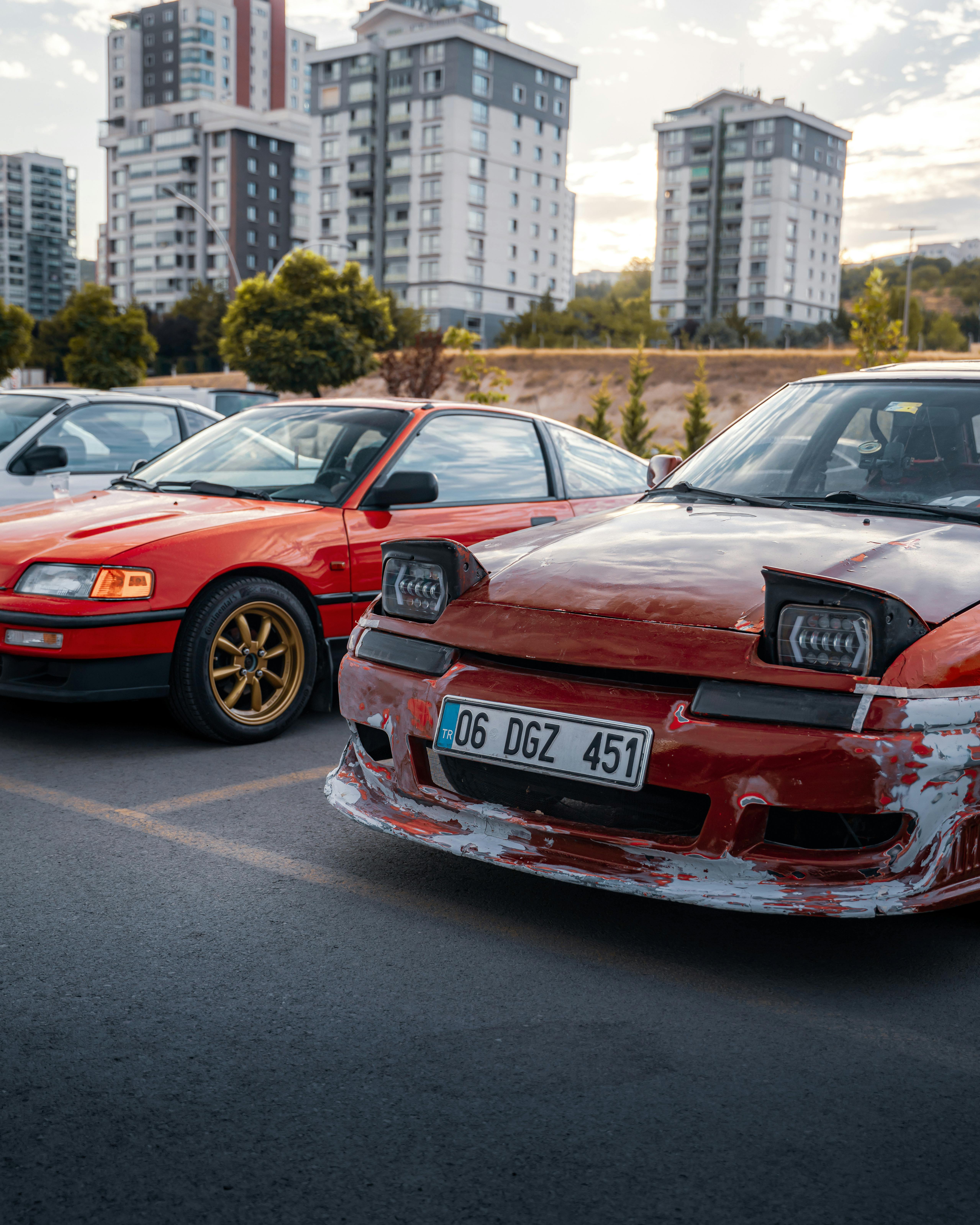
The allure of vintage cars transcends mere transportation; they are rolling time capsules that capture the essence of bygone eras, offering a tangible connection to automotive history. For newcomers to the collector car hobby, the combination of rising values and potential maintenance concerns can seem daunting, often leading to the misconception that classic car ownership is exclusively for the wealthy. However, this is far from the truth.
There is something undeniably special about sliding behind the wheel of a vehicle that has survived decades of changing tastes and technologies. The distinctive rumble of an air-cooled engine, the tactile feedback of manual steering, and the analog simplicity of mechanical components create an experience entirely different from modern driving. Many first-time collectors discover that vintage cars offer more than just weekend enjoyment; they can be surprisingly practical investments, often appreciating over time unlike most new vehicles which depreciate rapidly.
With these considerations in mind, it’s crucial for aspiring classic car owners to perform a budget reality check, factoring in storage, insurance, parts availability, and maintenance costs. Mechanical aptitude, storage solutions, and intended use should also guide selection. This article highlights a curated list of vintage cars that hit the sweet spot: affordable to buy, reliable enough to drive regularly, and easy to maintain without requiring a second mortgage or constant chasing of obscure parts. These are the kind of cars you can actually enjoy owning—tools, not just trophies.
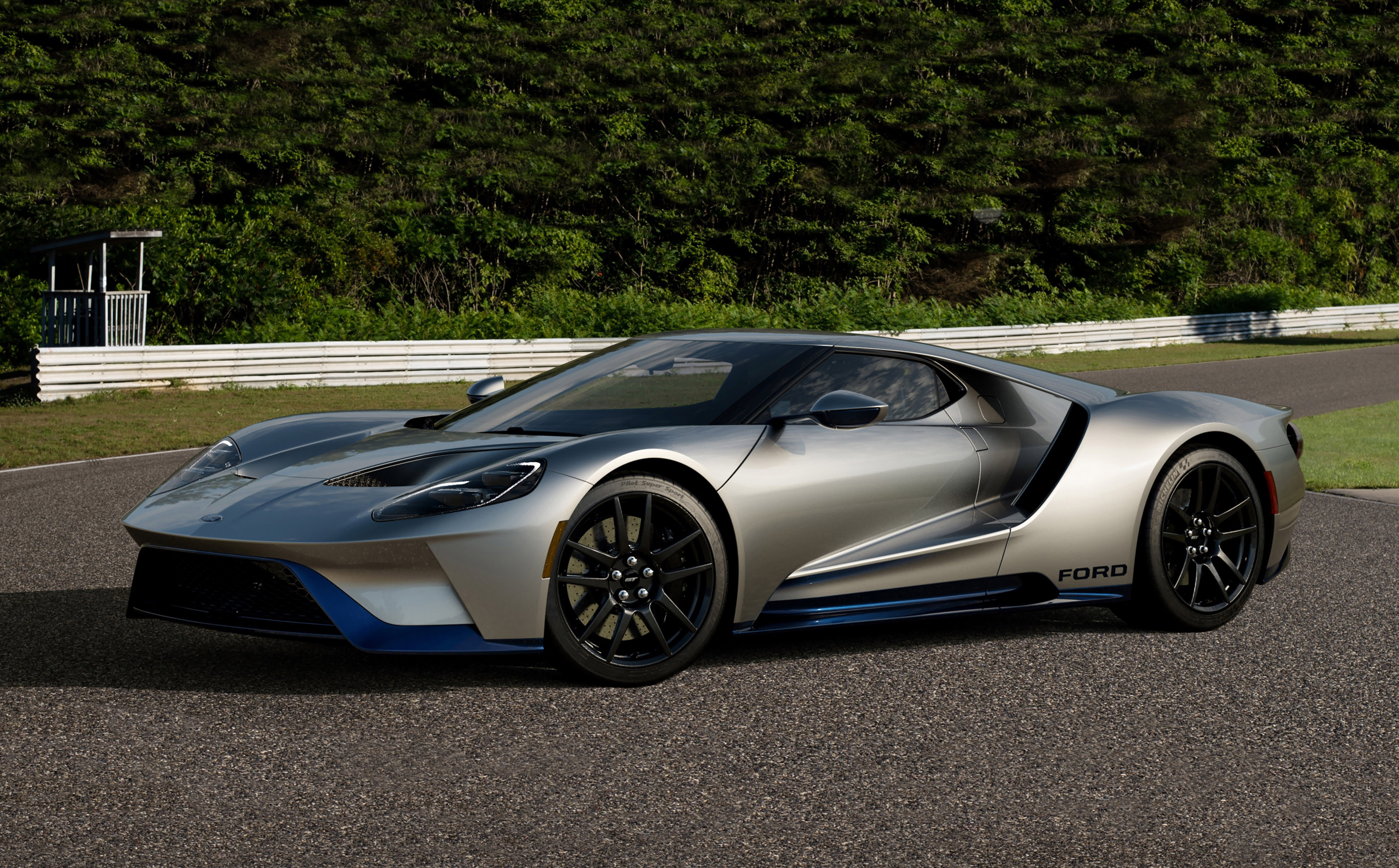
1. **Ford Mustang (1965-1973): The American Icon**The first-generation Ford Mustang stands as an undeniable symbol of American muscle and style, a car that ignited the pony car phenomenon upon its release in 1964. Its powerful V8 engine options and sleek design quickly made it a favorite among enthusiasts and the general public alike, cementing its legendary status in automotive history. Despite its iconic standing, early models from the 1965-1970 period remain relatively affordable, offering a thrilling driving experience that continues to captivate today.
America’s pony car offers tremendous bang for the buck in the classic market. While highly sought-after early examples and special editions naturally command premium prices, six-cylinder models and base V8 variants are still surprisingly accessible. This accessibility ensures that the dream of owning a piece of American automotive heritage is within reach for a broader range of collectors, not just those with unlimited budgets.
One of the most appealing aspects of the Ford Mustang for new collectors is its enduring popularity, which translates into excellent parts availability and robust community support. Nearly every component for these classic Mustangs is reproduced, making restoration and maintenance a remarkably straightforward process, even for beginners. This vast support network eases many of the typical concerns associated with classic car ownership, allowing owners to focus on enjoyment rather than endless searching for elusive parts.
Specifically, the 1967-1973 models represent particular value, with prices for driver-quality examples generally ranging from $15,000 to $25,000. Six-cylinder cars often sell for even less, yet they deliver the same iconic styling and connection to a significant era of American motoring. As automotive historian Robert Johnson notes, “The Mustang is America’s most democratic classic. It’s always been about delivering style and performance to the masses, and that philosophy extends to the collector market today.” This philosophy ensures that owning a Mustang remains a joyful and relatively uncomplicated endeavor for many.
Car Model Information: 2008 Ford Mustang GT Premium
Name: Ford Mustang
Caption: 2018 Ford Mustang GT 5.0
Aka: Ford T5 (Germany)
Manufacturer: Ford Motor Company
Production: March 1964 – present
ModelYears: 1965–present
Class: Unbulleted list
BodyStyle: Unbulleted list
Layout: Front-engine, rear-wheel-drive layout
Categories: 1970s cars, 1980s cars, 1990s cars, 2+2 coupés, 2000s cars
Summary: The Ford Mustang is an American automobile manufactured and marketed by Ford since 1964, as Ford’s longest nameplate in continuous production. Currently in its seventh generation, it is the fifth-best selling Ford car nameplate. The namesake of the “pony car” automobile segment, the Mustang was developed as a highly styled line of sporty coupes and convertibles derived from existing model lines, initially distinguished by its pronounced “long hood, short deck” proportions.
Originally predicted to sell 100,000 vehicles yearly, the 1965 Mustang became the most successful vehicle launch since the 1927 Model A. Introduced on April 17, 1964 (16 days after the Plymouth Barracuda), over 400,000 units were sold in its first year; the one-millionth Mustang was sold within two years of its launch. In August 2018, Ford produced the 10-millionth Mustang; matching the first 1965 Mustang, the vehicle was a 2019 Wimbledon White convertible with a V8 engine.
The success of the Mustang launch led to multiple competitors from other American manufacturers, including the Chevrolet Camaro and Pontiac Firebird (1967), AMC Javelin (1968), and Dodge Challenger (1970). It also competed with the Plymouth Barracuda, which was launched around the same time. The Mustang also had an effect on designs of coupes worldwide, leading to the marketing of the Toyota Celica and Ford Capri in the United States (the latter, by Lincoln-Mercury). The Mercury Cougar was launched in 1967 as a unique-bodied higher-trim alternative to the Mustang; during the 1970s, it included more features and was marketed as a personal luxury car.
From 1965 until 2004, the Mustang shared chassis commonality with other Ford model lines, staying rear-wheel-drive throughout its production. From 1965 to 1973, the Mustang was derived from the 1960 Ford Falcon compact. From 1974 until 1978, the Mustang (denoted Mustang II) was a longer-wheelbase version of the Ford Pinto. From 1979 until 2004, the Mustang shared its Fox platform chassis with 14 other Ford vehicles (becoming the final one to use the Fox architecture). Since 2005, the Mustang has used the D2C platform, unique to the Mustang.
Through its production, multiple nameplates have been associated with the Ford Mustang series, including GT, Mach 1, Boss 302/429, Cobra (separate from Shelby Cobra), and Bullitt, along with “5.0” fender badging (denoting 4.9 L OHV or 5.0 L DOHC V8 engines).
Get more information about: Ford Mustang
Buying a high-performing used car >>>
Brand: Ford Model: Mustang
Price: $16,785 Mileage: 81,832 mi.
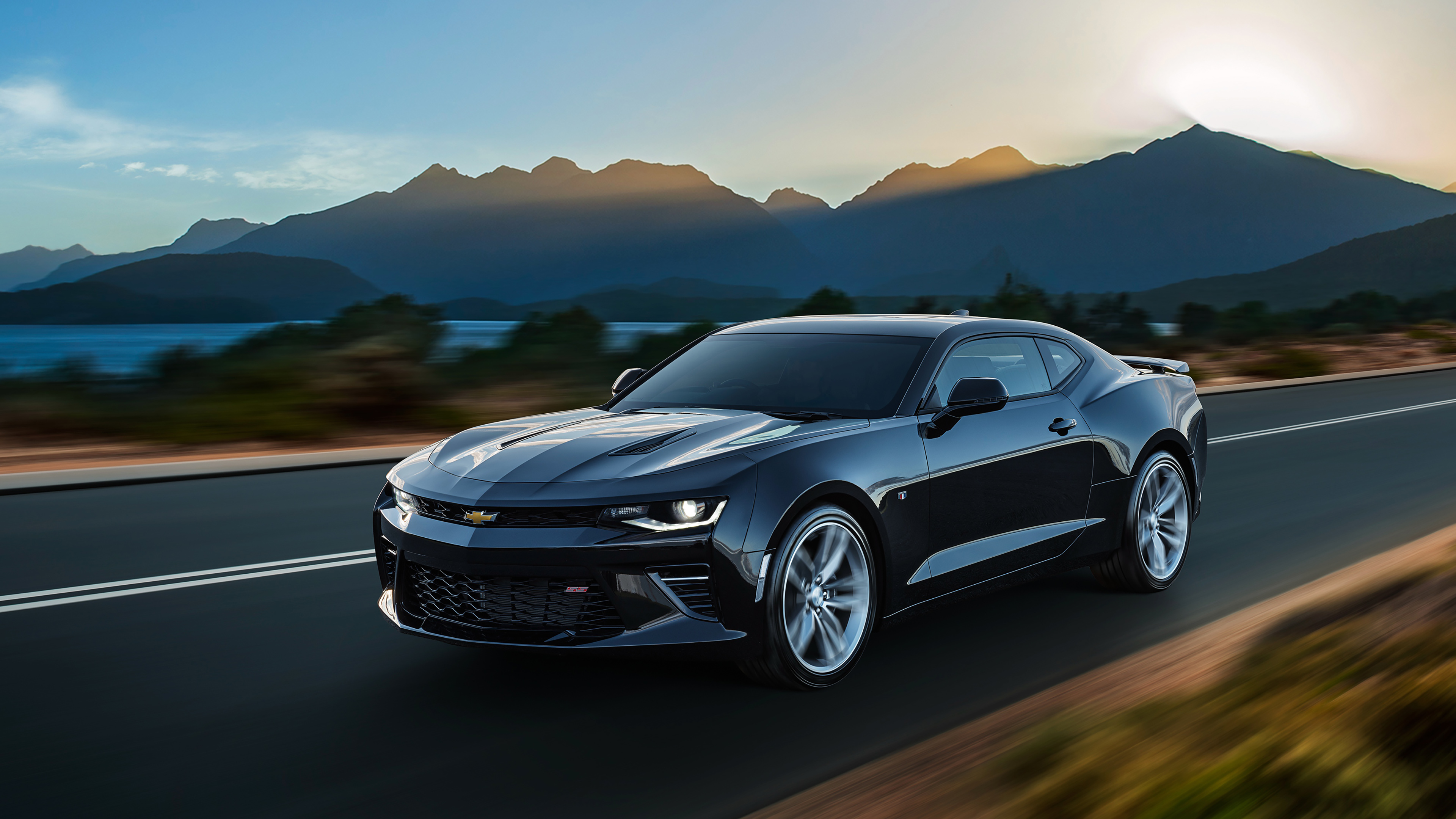
2. **Chevrolet Camaro (1967-1969): Muscle Car Value**The first-generation Chevrolet Camaro, known for its aggressive styling and robust performance, quickly became a formidable competitor to the Mustang. It debuted in 1967 and has since established itself as a quintessential classic muscle car that continues to offer great value in today’s market. With its distinct appearance and powerful presence, the early Camaro is a highly desirable vehicle for collectors on a budget.
This classic machine was designed with versatility in mind, offering a wide range of engine options to suit different tastes and budgets. From economical inline-sixes that provided reliable daily transportation to potent V8s delivering exhilarating muscle car performance, the first-generation Camaro catered to a broad audience. This variety means that prospective owners can find a model that perfectly balances their desired performance with their financial investment.
Beyond its initial iterations, the second-generation Chevrolet Camaro, produced from 1970 to 1981, also presents an enticing option for collectors. It boasts a bold, muscular look that continues to turn heads, maintaining the Camaro’s legacy of strong visual appeal. Like its predecessor, this generation offered various engine choices, blending fuel efficiency with high-performance capabilities, ensuring there’s a Firebird for almost any preference.
An added benefit for Camaro enthusiasts is the ease of parts acquisition. Since the Firebird shares many components with the Chevrolet Camaro, it naturally benefits from a vast and accessible parts network. This shared architecture simplifies repairs and upgrades, making it easier to keep these classic muscle cars in prime condition and on the road. Many car fans love the Camaro for its potent mix of style and power, making it a compelling choice for affordable classic ownership.
Car Model Information: 2018 Chevrolet Camaro 1SS
Name: Chevrolet Camaro
Manufacturer: Chevrolet
Production: 1966–2002,2009–2023
ModelYears: 1967–2002,2010–2024
Class: Pony car
BodyStyle: coupe,convertible
Platform: GM F platform,GM Zeta platform,GM Alpha platform
Layout: Front-engine, rear-wheel-drive layout
Categories: 1970s cars, 1980s cars, 1990s cars, 2+2 coupés, 2000s cars
Summary: The Chevrolet Camaro is a mid-size American automobile manufactured by Chevrolet, classified as a pony car. It first went on sale on September 29, 1966, for the 1967 model year and was designed to compete with the Ford Mustang. The Camaro shared its platform and major components with the Firebird, produced by General Motors’ Pontiac division that was also introduced for the 1967 model year.
Four distinct generations of the Camaro were developed before production ended in 2002. The nameplate was revived on a concept car that evolved into the fifth-generation Camaro; production started on March 16, 2009.
Production of the sixth generation of the Camaro ended in December 2023, for the 2024 model year.
Get more information about: Chevrolet Camaro
Buying a high-performing used car >>>
Brand: Chevrolet Model: Camaro
Price: $33,988 Mileage: 49,199 mi.
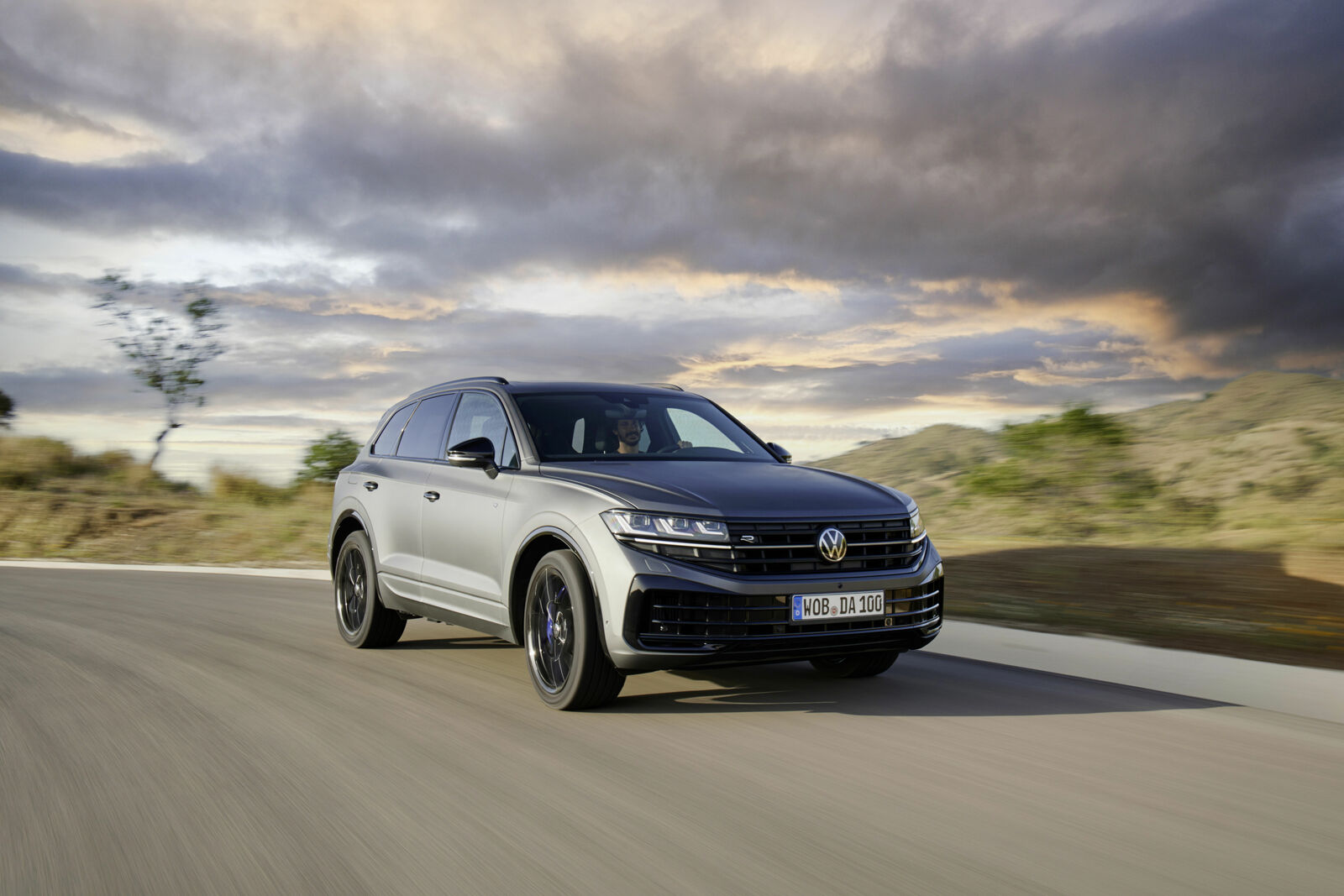
3. **Volkswagen Beetle (1958-1979): Universal Charm and Simplicity**The Volkswagen Beetle is arguably one of the most recognizable and beloved classic cars ever produced, instantly identifiable by its distinctive, rounded shape that has captivated people worldwide. Its charm lies not only in its unique design but also in its simple, air-cooled engine and incredible reliability, making it an excellent entry-level collector’s car. For anyone looking to dip their toes into classic car ownership, the Beetle offers a remarkably forgiving and enjoyable experience.
The Beetle is hard to beat when it comes to cheap classic ownership. Its famously easy-to-maintain air-cooled 1.6L flat-four engine means you don’t need much more than a basic socket set to perform significant work. The absence of a water pump, radiator, or complex electronics simplifies mechanical tasks considerably, making it an ideal first classic for those developing mechanical skills or even performing basic maintenance in the driveway. Parts are plentiful and remarkably affordable, further reducing ownership costs.
Beyond its mechanical simplicity, the Beetle’s interior is minimal—featuring vinyl seats, a metal dash, and a handful of switches. This minimalist approach contributes to its incredible durability and ease of maintenance, as there are fewer complex components to fail or chase down. This simplicity is part of what keeps it so approachable and economical, making it a truly practical classic that can be enjoyed without constant worry about intricate repairs.
Furthermore, the Beetle benefits from a massive aftermarket and a vibrant community of enthusiasts. As vintage VW enthusiast Maria Rodriguez observes, “The beauty of the Beetle is its community. Whatever problem you encounter, someone has solved it before and documented the solution. It’s hard to find a more beginner-friendly classic.” Prices range from $5,000 for solid drivers to $15,000 for exceptional examples of later models, with Super Beetles (1971-1979) often representing the best value due to their improved front suspension and slightly more modern amenities, all while retaining that unmistakable Beetle character.

4. **Chevrolet Corvette C3 (1968-1982): Distinctive American Performance**The third-generation Chevrolet Corvette, widely recognized by its striking “Coke bottle” design and distinctive T-top roofs, offers a compelling blend of performance and style that remains highly desirable. Produced from 1968 to 1982, the C3 Corvette embodies the flamboyant spirit of its era, making it a fantastic choice for collectors seeking an American sports car that truly stands out. Despite its bold aesthetics and sporting pedigree, a wide range of models are available, keeping it surprisingly affordable for enthusiasts.
America’s sports car delivers remarkable performance value in its third generation. While early chrome-bumper models have appreciated significantly and command higher prices, the later rubber-bumper C3 Corvettes remain surprisingly accessible. These models offer the same head-turning style and the unmistakable roar of a classic American V8 engine, with prices typically starting around $10,000 for driver-quality examples. This makes the C3 an excellent entry point into Corvette ownership without breaking the bank.
Specifically, the 1975-1979 models represent particular value, combining the C3’s dramatic styling with noticeable improvements in build quality over the earliest examples. This sweet spot allows collectors to enjoy the quintessential C3 experience with enhanced reliability and less concern over some of the initial production quirks. The design of the C3 has aged exceptionally well, continuing to turn heads and draw admiration wherever it goes, cementing its place as a timeless classic.
Practical aspects of owning a C3 Corvette also contribute to its affordability and appeal. Parts availability is excellent, thanks to its widespread popularity and the robust aftermarket support for American muscle and sports cars. Furthermore, the cars’ fiberglass bodies eliminate the major rust concerns often associated with vintage steel-bodied vehicles, simplifying long-term ownership. Their traditional front-engine, rear-wheel-drive layout also makes them relatively straightforward to maintain compared to more exotic mid-engine counterparts.
Car Model Information: 2018 Chevrolet Corvette Grand Sport
Name: Chevrolet Corvette (C3)
Caption: 1973 Chevrolet Corvette Stingray
Manufacturer: Chevrolet
Aka: Chevrolet Corvette Stingray,(1968–76)
Production: August 1967 – October 1982
ModelYears: 1968–82
Platform: General Motors Z platform
Assembly: St. Louis Truck Assembly,Bowling Green Assembly Plant
Predecessor: Chevrolet Corvette (C2)
Successor: Chevrolet Corvette (C4)
Class: Sports car
BodyStyle: Convertible (car),coupé
Layout: Mid-engine design
Engine: {{cvt,305,cuin,L,1,Chevrolet small-block engine (first- and second-generation)#LG4,V8 engine
Transmission: manual transmission,manual transmission,Turbo-Hydramatic,Automatic transmission
Wheelbase: cvt
Length: {{cvt,182.1,in,mm,0
Width: {{cvt,69.2,in,mm,0
Height: {{cvt,47.8,in,mm,0
Weight: cvt
Designer: GM & Chevrolet design staff,Zora Arkus-Duntov,Bill Mitchell (designer)
Categories: 1970s cars, 1980s cars, All articles with unsourced statements, Articles with short description, Articles with unsourced statements from April 2024
Summary: The Chevrolet Corvette (C3) is the third generation of the Corvette sports car that was produced from 1967 until 1982 by Chevrolet for the 1968 to 1982 model years. Engines and chassis components were mostly carried over from the previous generation, but the body and interior were new. It set new sales records with 53,807 produced for the 1979 model year. The C3 was the second Corvette to carry the Stingray name, though only for the 1969–76 model years. This time it was a single word as opposed to Sting Ray as used for the 1963–67 C2 generation. The name was then retired until 2014 when it returned with the release of the C7.
The most expensive Corvette C3 to sell in history was a 1969 L88 Lightweight, one of only four lightweight L88s to be produced. It was sold by Barrett-Jackson in January 2014 for $2,860,000 (£1,728,941).
Get more information about: Chevrolet Corvette (C3)
Buying a high-performing used car >>>
Brand: Chevrolet Model: Corvette C3
Price: $59,896 Mileage: 26,662 mi.

5. **Datsun/Nissan Z Cars (1970-1983): Japanese Reliability Meets Sports Car Flair**The Datsun 240Z, first introduced in 1970, is often credited with democratizing sports car performance, bringing an engaging driving experience to the masses at an affordable price point. Its sleek design, reliable inline-six engine, and balanced handling quickly made it a highly desirable classic, earning a reputation that rivaled more expensive European models. This initial success laid the groundwork for a lineage of enduring Japanese sports cars.
While the original Z cars, particularly the 240Z, 260Z, and 280Z, have seen considerable appreciation in recent years, their successors—namely the 280ZX (1979-1983) and early 300ZX models—remain comparatively affordable. The 280ZX, in particular, represents an accessible entry point for collectors, with good examples typically ranging from $10,000 to $18,000. These later models offer a compelling blend of vintage character with more modern amenities, making them practical for regular use.
What truly sets these Japanese sports cars apart for new collectors is their reputation for reliability, a trait that many European competitors of the era simply couldn’t match. They feature robust powertrains that can handle consistent use without demanding constant attention, complemented by excellent parts support. This blend of vintage styling and dependable engineering makes them remarkably usable classics, bridging the gap between weekend pleasure and everyday practicality.
As Japanese collectible classic cars expert Hiroshi Yamada observes, “The later Z cars were overlooked for years. They’re finally getting the recognition they deserve, which suggests potential for appreciation while still being affordable entry points.” This expert insight highlights not just their current affordability but also their potential as a smart investment for the discerning enthusiast. Their vibrant cult following further ensures that parts and community support are easy to come by, making the Z car experience a truly rewarding one.
Car Model Information: 1972 Datsun 240Z
Name: Nissan Fairlady Z (Datsun 240Z, 260Z, and 280Z)
Aka: unbulleted list
Manufacturer: Nissan
Production: 1969–1978
Class: Sports car
Layout: Front-engine, rear-wheel-drive layout
Assembly: Hiratsuka, Kanagawa
BodyStyle: unbulleted list
Designer: Yoshihiko Matsuo
Predecessor: Datsun Sports
Successor: Nissan Fairlady Z (S130)
Caption: 1970–1973 Nissan Fairlady Z
Categories: 1970s cars, All Wikipedia articles written in American English, All articles with unsourced statements, Articles with short description, Articles with unsourced statements from February 2021
Summary: The Nissan S30, sold in Japan as the Nissan Fairlady Z but badged as the Datsun 240Z, 260Z, and 280Z for export, are 2-seat sports cars and 2+2 GT cars produced by Nissan from 1969 until 1978. The S30 was conceived of by Yutaka Katayama, the President of Nissan Motor Corporation U.S.A., and designed by a team led by Yoshihiko Matsuo, the head of Nissan’s Sports Car Styling Studio. It is the first car in Nissan’s Z series of sports cars.
The S30 had four-wheel independent suspension and a powerful straight-six engine with an overhead camshaft, features identified with far more expensive premium European sports cars and coupés such as the Jaguar E-Type and BMW 2800 CS, but absent from similarly priced sports cars such as the Alfa Romeo Spider, MGB and Opel GT, which had smaller four-cylinder engines and rear live axles. The S30’s styling, engineering, relatively low price, and impressive performance resonated with the public, received a positive response from both buyers and the motoring press, and immediately generated long waiting lists.
As a halo car, the S30 broadened the acceptance of Japanese carmakers beyond their image as producers of practical and reliable but prosaic and unfashionable economy cars. Datsun’s growing dealer network—compared to limited production imported sports cars manufactured by Jaguar, BMW, Porsche, Alfa Romeo, and Fiat—ensured both easy purchase and ready maintenance.
The S30 was initially sold alongside the smaller four-cylinder Datsun Sports, which was dropped from production in 1970. The S30 240Z is unrelated to the later 240SX, sold as the Silvia in Japan.
Get more information about: Nissan Fairlady Z (S30)
Buying a high-performing used car >>>
Brand: Datsun Model: 240Z
Price: $31,995 Mileage: 122,000 mi.
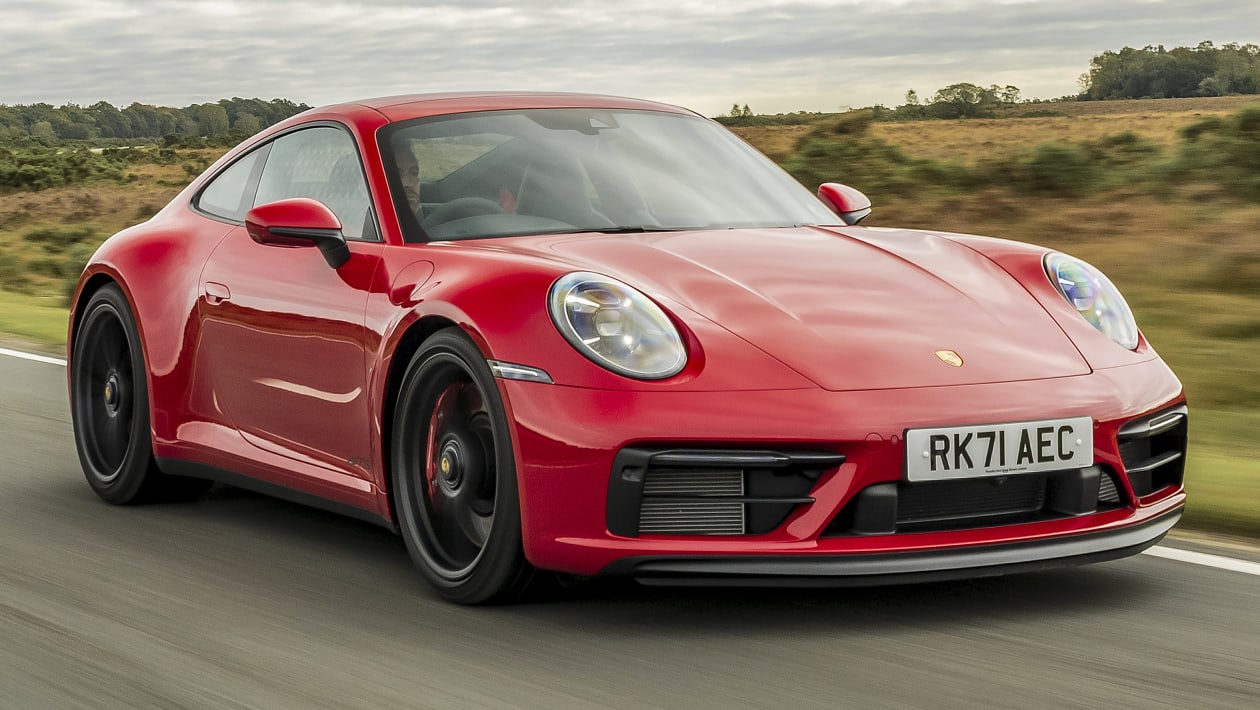
6. **Porsche 944 (1982-1991): Accessible German Engineering**The Porsche 944, produced from 1982 to 1991, offers a perfect blend of performance, handling, and surprising affordability, making it an excellent entry point into classic Porsche ownership. Its front-engine, rear-wheel-drive layout, combined with a balanced weight distribution, provides an engaging driving experience that is quintessential Porsche. Early models are still notably accessible to collectors, allowing enthusiasts to experience German engineering prowess without the hefty price tag often associated with the brand.
This sports car allows enthusiasts to enjoy the celebrated Porsche experience at a mere fraction of the cost of a 911. Its sleek, aerodynamic design has aged gracefully, maintaining a modern and sophisticated aesthetic that continues to turn heads today. The 944 is renowned for its excellent balance and precise handling, attributes that make it incredibly fun to drive, especially on winding roads where its capabilities truly shine.
While parts for a Porsche can naturally be pricier than for some other cars on this list, the 944 remains one of the more affordable ways to own a classic Porsche. The investment in maintenance is often justified by the unparalleled driving dynamics and the prestige of the Porsche badge. It delivers a refined and sporty feel that is hard to match in its price bracket, making it a strong contender for those aspiring to European sports car ownership.
The 944 also benefits from a dedicated enthusiast community, which is a valuable resource for owners seeking advice, parts, and technical support. This strong network helps to mitigate some of the potential challenges of owning a classic German performance car, ensuring that new owners can keep their 944 running smoothly and enjoyably. It’s a testament to its enduring appeal and robust design that so many remain on the road, ready for new adventures with passionate owners.
Car Model Information: 1987 Porsche 944
Caption: 1986 944 Turbo (951) US-spec
Name: Porsche 944
Manufacturer: Porsche AG
Class: Sports car
Production: 1982–1991
Layout: Front-engine, rear-wheel-drive layout
Assembly: Neckarsulm,Stuttgart
Designer: Harm Lagaay
Predecessor: Porsche 924
Successor: Porsche 968
BodyStyle: coupé,convertible
Engine: Straight-four engine,Turbocharger,2.7 L M44/12 I4,3.0 L M44/41 I4
Wheelbase: 2400 mm
Abbr: on
Length: 1986–1988: {{convert,4318,mm,in,1,abbr=on
Width: 1735 mm
Height: 1275 mm
Transmission: Automatic transmission,Manual transmission
Weight: Pre-1988: {{convert,1180,kg,lb,0,abbr=on
Categories: 1990s cars, All articles needing additional references, All articles with unsourced statements, Articles needing additional references from September 2024, Articles with short description
Summary: The Porsche 944 is a sports car which was manufactured by the German company Porsche from 1982 until 1991. A front-engine, rear-wheel drive model based on the platform of the 924, the 944 was available in coupé or cabriolet body styles, with either naturally aspirated or turbocharged engines. With over 163,000 cars produced, the 944 was the most successful sports car in Porsche’s history until the introductions of the Boxster and 997 Carrera.
Extensive design revisions for the 1992 model year prompted Porsche to drop the 944 nameplate and rebrand the vehicle as the 968.
Get more information about: Porsche 944
Buying a high-performing used car >>>
Brand: Porsche Model: 944
Price: $34,999 Mileage: 79,665 mi.
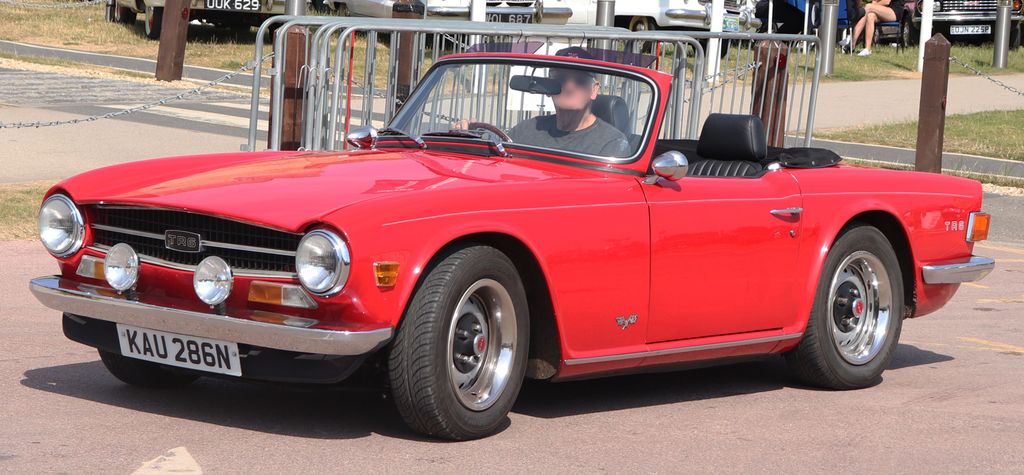
7. **Triumph TR6 (1969-1976): Quintessential British Roadster**The Triumph TR6 stands as a quintessential British roadster, offering a visceral open-top driving experience with a distinctive, muscular styling penned by Karmann. Produced from 1969 to 1976, its rugged appearance and spirited character make it an attractive entry into vintage European sports car ownership for enthusiasts. It’s a machine that truly embodies the raw, engaging feel of a classic.
Under the hood, the TR6 features a robust 2.5-liter inline-six engine, delivering respectable torque and a characterful exhaust note that is pure vintage sports car. This conventional mechanical layout is not only engaging on winding roads but also surprisingly accessible for home mechanics, simplifying ownership for those who enjoy hands-on maintenance. This blend of performance and practicality makes the TR6 a rewarding choice.
The TR6 also benefits from strong enthusiast support and excellent parts availability, crucial for any classic car. Its traditional body-on-frame construction is forgiving for those new to restoration, allowing for incremental improvements over time. Driver-quality TR6s typically range from $10,000 to $20,000, representing significant enjoyment for the investment. As with most British classics, careful inspection for rust is advisable, but a well-chosen TR6 promises countless miles of exhilarating driving.
Car Model Information: 1972 Triumph TR6 Base
Sp: uk
Name: Triumph TR6
Production: 19 September 1968 – 20 July 1976
ModelYears: 1969–1976
Manufacturer: Triumph Motor Company
Class: Roadster (automobile)
BodyStyle: roadster (automobile)
Predecessor: Triumph TR5#TR250
Layout: FR layout
Transmission: manual transmission
Wheelbase: 2235 mm
Abbr: on
Length: 3950 mm
Width: 1550 mm
Height: 1270 mm
Weight: 1130 kg
Successor: Triumph TR7
Engine: Triumph I6
Assembly: Coventry
Categories: 1960s cars, 1970s cars, All Wikipedia articles written in British English, Articles with short description, CS1: long volume value
Summary: The Triumph TR6 is a sports car that was built by the Triumph Motor Company of England. While production began several months earlier, the TR6 was officially introduced in January as a 1969 model year vehicle. The last TR6 was produced on 20 July 1976. Of the 91,850 TR6s produced, 83,480 were exported, almost all of them to the United States, while only 8,370 were sold in the UK.
Get more information about: Triumph TR6
Buying a high-performing used car >>>
Brand: Triumph Model: TR6
Price: $26,999 Mileage: 1,172 mi.
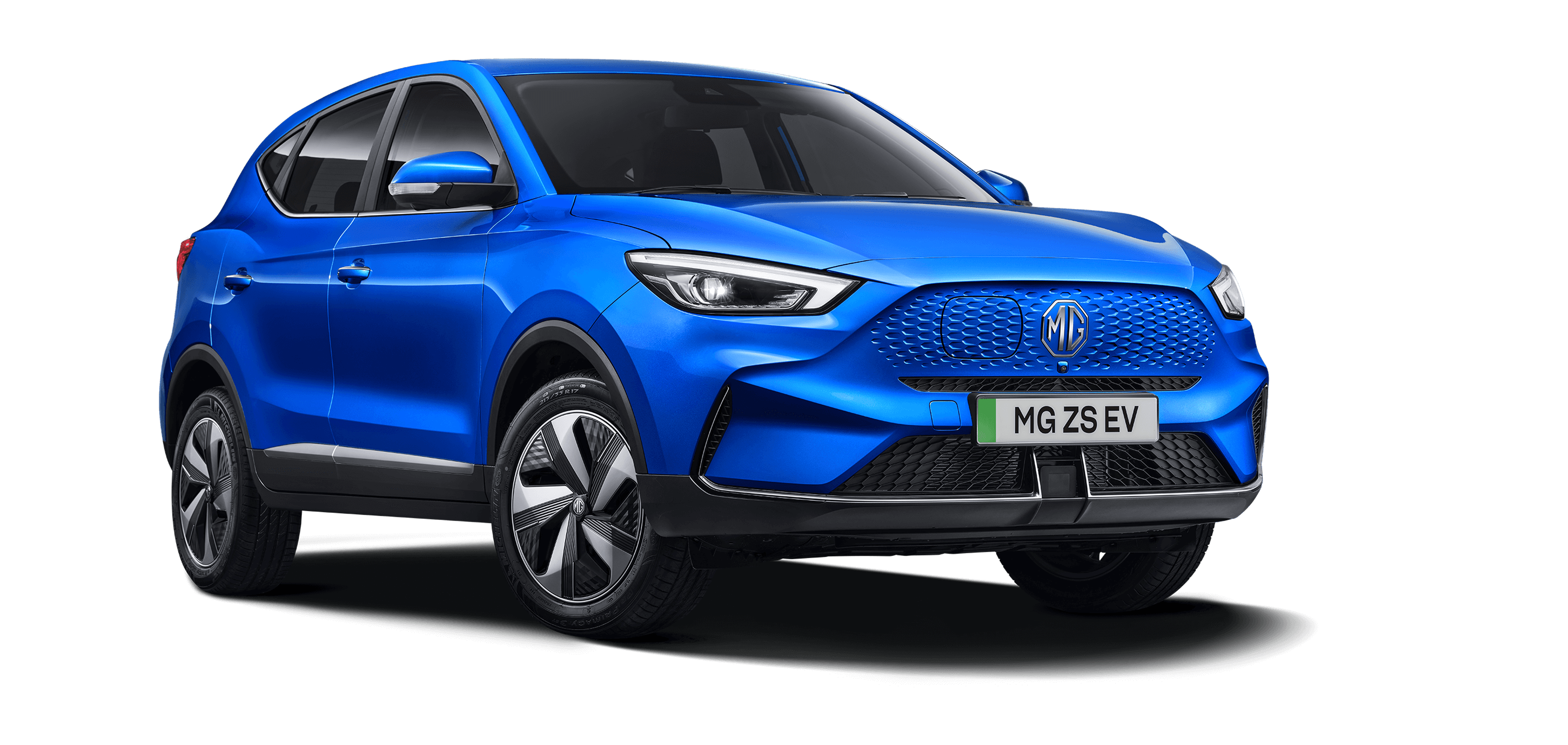
8. **MG MGB (1962-1980): The Approachable British Icon**For many, the MG MGB defines the classic British sports car, a charming and straightforward convertible that has served as an accessible entry point into European motoring for decades. With over half a million units produced from 1962 to 1980, its immense popularity guarantees an unparalleled level of parts availability and a vibrant global community of dedicated enthusiasts, significantly easing the path for new collectors.
The MGB was available as an iconic open-top Roadster, offering that inimitable wind-in-your-hair sensation, and a more practical GT Coupe with its stylish hatchback design. Both versions share a simple, robust mechanical platform that emphasizes reliability and straightforward maintenance. This simplicity, coupled with its engaging handling, makes the MGB an incredibly enjoyable car for weekend drives or local car shows.
MGB ownership is further enhanced by its responsiveness to incremental improvements. Its mechanical simplicity makes it ideal for owners developing restoration skills, fostering a deeper connection with their vehicle. Prices remain remarkably affordable, ranging from around $5,000 for project cars to $15,000 for exceptional examples. Driver-quality cars, found in the $8,000 to $10,000 bracket, prove that classic car ownership can be both enjoyable and budget-friendly.
Car Model Information: 1977 MG MGB Roadster
Name: MGB
Caption: 1969 MGB roadster – rollover bar non-standard
Layout: FR layout
Manufacturer: British Motor Corporation,British Leyland,Rover Group
Production: 1962–1980 (original),1992–1995 (MG RV8)
Predecessor: MG MGA
Successor: MG F / MG TF
Class: Sports car
Assembly: Abingdon, Oxfordshire,Enfield, New South Wales,Cowley, Oxford
Categories: 1970s cars, 1980s cars, 1990s cars, All Wikipedia articles written in British English, All articles lacking reliable references
Summary: The MGB is a two-door sports car which was manufactured from 1962 until 1980 by the British Motor Corporation (BMC) (later the Austin-Morris division of British Leyland) and marketed under the MG marque. It was announced and its details first published on 19 September 1962. Introduced as a four-cylinder soft-top roadster, later variants include the MGB GT three-door 2+2 coupé (1965–1980), the six-cylinder sports car and coupé MGC (1967–1969), and the eight-cylinder 2+2 coupé, the MGB GT V8 (1973–1976).
Replacing the MGA in 1962, production of the MGB and its variants continued until 1980, though fixed roof GT models ceased export to the US in 1974. Sales for the MGB, MGC and MGB GT V8 combined totaled 523,836 cars. After a 12-year hiatus, the MGB re-entered production as the heavily modified MG RV8 with a limited run of 2,000 cars before its final replacement in 1995 by the MG F.
Get more information about: MG MGB
Buying a high-performing used car >>>
Brand: MG Model: MGB
Price: $14,999 Mileage: 70,789 mi.

9. **Volvo 240 Series (1974-1993): The Indestructible Swedish Tank**When seeking a classic car that combines practicality with bulletproof reliability, the Volvo 240 Series consistently emerges as a top contender. Produced for nearly two decades from 1974 to 1993, these Swedish stalwarts have garnered a legendary reputation for their incredible durability and no-nonsense engineering. Their distinctive, squared-off styling, once seen as purely functional, has aged gracefully into a timeless design, attracting a growing legion of enthusiasts.
The Volvo 240 was engineered for longevity, a philosophy evident in the remarkable number still operating as dependable daily drivers after four decades. Power comes from virtually indestructible B21 or B23 inline-four engines, often paired with durable manual or automatic transmissions. This mechanical resilience ensures that the 240 Series requires little more than routine maintenance to keep running smoothly, making it an incredibly practical classic. As Scandinavian car specialist Erik Lindgren highlights, “They were engineered to last 20+ years when most manufacturers were building for 10.”
Inside, the 240 Series offers upright, supportive seats and a functional dashboard, while wagon variants provide unmatched practicality. Parts are plentiful and economical, from brakes to fuel system components, making upkeep straightforward. For collectors prioritizing usability alongside vintage charm, the Volvo 240 offers exceptional value, with prices ranging from $4,000 for solid drivers to $12,000 for pristine examples. It’s a classic that proves reliability and style can coexist affordably.
Car Model Information: 2024 Buick Enclave Premium FWD
Name: Volvo 200 Series
Caption: 1989 Volvo 240 GL station wagon
Manufacturer: Volvo Cars
Production: 1974–1993,2,862,573 produced
ModelYears: 1975–1993
Assembly: ubl
Predecessor: Volvo 140 Series,Volvo 164
Successor: Volvo 850,Volvo 760
Class: Mid-size car
BodyStyle: Sedan (automobile),station wagon
Layout: Front-engine, rear-wheel-drive
Platform: Volvo P platform
Related: Volvo 262C
Engine: collapsible list
Title: Petrol and diesel engines
Transmission: 4-speed manual,4-speed manual with overdrive,5-speed manual,3-speed automatic,4-speed automatic
Wheelbase: 104.3 in
Abbr: on
Length: convert
Width: convert
Height: convert
Designer: Jan Wilsgaard
Categories: 1980s cars, 1990s cars, All articles needing additional references, All articles with incomplete citations, All articles with unsourced statements
Summary: The Volvo 200 Series (designated internally as the 240 and 260 models) was a range of mid-size cars manufactured by Swedish automaker Volvo Cars from 1974 to 1993. Designed by Jan Wilsgaard, the series was developed from the Volvo 140 Series and incorporated safety innovations from Volvo’s VESC experimental safety vehicle program.
The 200 Series was produced in sedan, station wagon, and limited convertible body styles. Over 2.8 million units were manufactured during its 19-year production run, making it one of Volvo’s most successful model lines. The series established Volvo’s reputation for safety and durability, with many examples remaining in service decades after production ended.
Production overlapped with the introduction of the Volvo 700 Series in 1982. While the 260 Series was discontinued in 1984 and replaced by the 700 Series, the popular 240 model continued production until 1993. The final 240 was manufactured on 14 May 1993, concluding nearly two decades of production.
Get more information about: Volvo 200 Series
Buying a high-performing used car >>>
Brand: Volvo Model: 240 Series
Price: $29,997 Mileage: 37,001 mi.
Read more about: Beyond the Hype: 14 Unsung Automotive Icons That Defy Demolition and Redefine Longevity
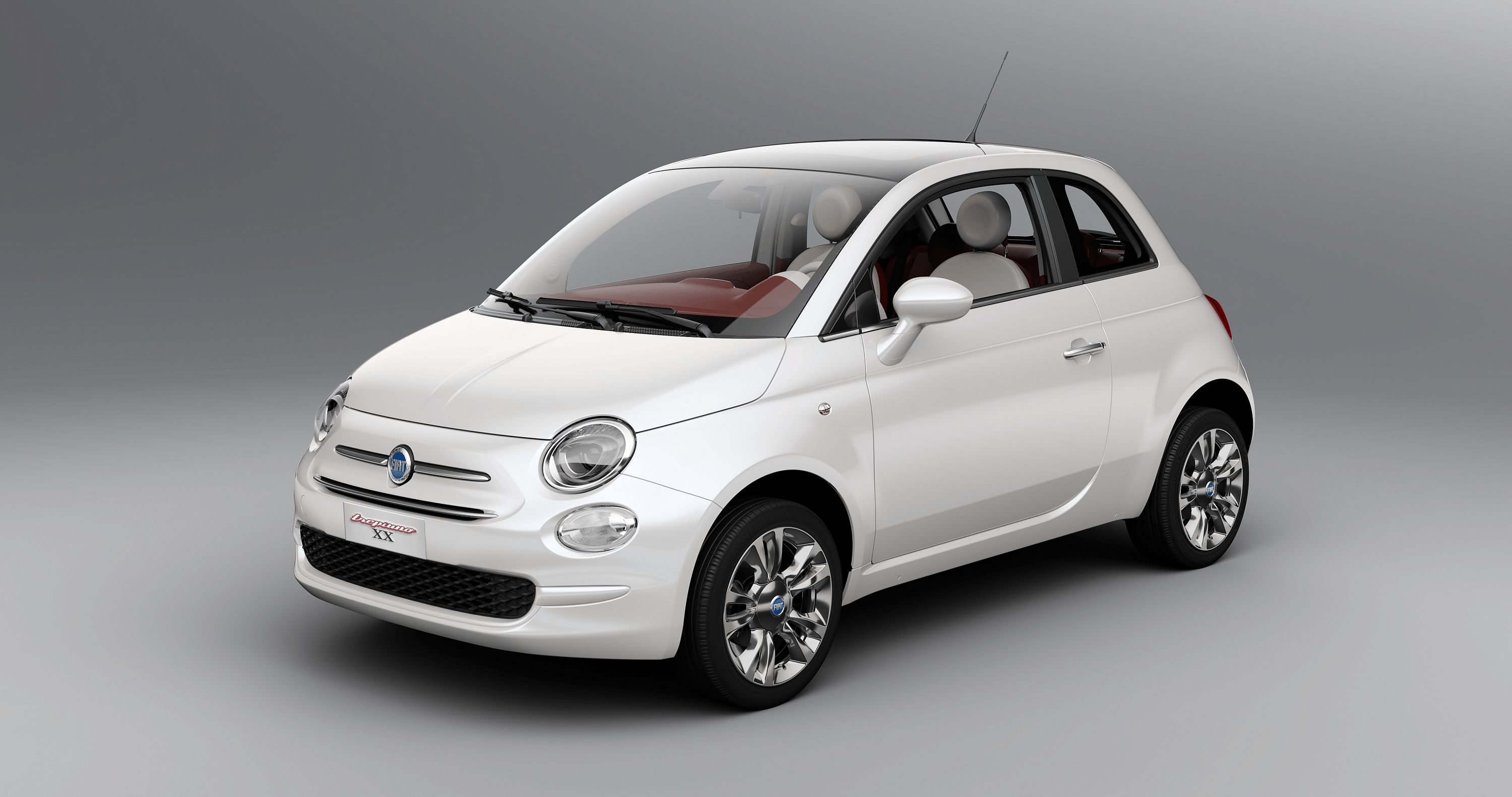
10. **Fiat 124 Spider (1966-1985): Italian Flair, Accessible Price**For those dreaming of Italian motoring with open-air exhilaration, the Fiat 124 Spider presents a captivating blend of sophisticated styling and engaging dynamics, often at a fraction of the cost of its more exotic European peers. Designed by the legendary Pininfarina studio, the 124 Spider, produced from 1966 to 1985, boasts a timeless elegance that remains striking decades after its debut.
The 124 Spider’s lively character is fueled by its spirited twin-cam engine, offering impressive performance and a distinctive soundtrack that elevates every drive. Later iterations, particularly the Pininfarina Spiders (1983-1985), significantly improved reliability while maintaining the car’s fundamental charm. Italian car specialist Antonio Rossi notes these cars deliver “80% of the driving experience of an Alfa Romeo at 50% of the price,” making it an appealing choice for enthusiasts.
Prospective owners can typically find good examples of the Fiat 124 Spider ranging from $8,000 to $15,000. Crucially, parts availability has seen substantial improvement due to the model’s growing appreciation within the classic car community. This enhanced support, coupled with its engaging character and stunning design, positions the Fiat 124 Spider as a smart and stylish option for entry-level collectors seeking a genuine taste of classic Italian motoring.

11. **Mercedes-Benz SL Roadsters (R107, 1971-1989): Durable German Luxury**The Mercedes-Benz SL Roadsters of the R107 generation exemplify timeless elegance combined with legendary German engineering. Produced for an impressive 18 years, from 1971 to 1989, these two-seat convertibles offer exceptional sophistication and durability, making them surprisingly affordable entry points into classic luxury car ownership. Their stately design has aged gracefully, maintaining a prestigious presence on any road.
R107 SL models are renowned for being “overbuilt to Mercedes’ legendary standards,” as vintage car specialist Thomas Reynolds notes. This commitment to engineering excellence means many examples have survived remarkably well, often accumulating hundreds of thousands of miles while still driving beautifully with proper maintenance. Early examples, particularly the 280SL and 380SL, represent fantastic value, offering class and comfort without the higher price tags of their more powerful siblings.
Moreover, R107 SLs are more DIY-friendly than many expect from a luxury German automobile. Their relative simplicity, especially compared to later, more electronically complex Mercedes models, makes them a practical choice for enthusiasts willing to perform basic maintenance. Prices typically fall within the $8,000 to $15,000 range for driver-quality examples, representing an intelligent choice for those seeking a classic luxury roadster that blends enduring style with tangible German reliability and potential for appreciation.
Car Model Information: 2024 Buick Enclave Premium FWD
Name: Mercedes-Benz SL-Class
Caption: Mercedes-Benz SL-Class (R231)
Manufacturer: ubl
Aka: Mercedes-AMG SL-Class (R232)
Production: 1954–present
Assembly: ubl
Class: Sports car
BodyStyle: ubl
Layout: ubl
Predecessor: ubl
Categories: 1960s cars, 1970s cars, 1980s cars, 1990s cars, 2000s cars
Summary: The Mercedes-Benz SL-Class (marketed as Mercedes-AMG SL since 2022) is a grand touring sports car manufactured by Mercedes-Benz since 1954. The designation “SL” derives from the German term “Sport-Leicht”, which translates to “Sport Light” in English.
Initially, the first 300 SL was a racing sports car built in 1952
with no intention of developing a street version. In 1954, an American importer Max Hoffman suggested the street version of 300 SL for the wealthy performance car enthusiasts in the United States where the market for the personal luxury car was booming after the Second World War.
Get more information about: Mercedes-Benz SL-Class
Buying a high-performing used car >>>
Brand: Mercedes-Benz Model: SL Roadsters
Price: $29,997 Mileage: 37,001 mi.

12. **Toyota Celica (1971-1977): Reliable Japanese Sportiness**The early Toyota Celica offers an accessible blend of reliability, engaging driving dynamics, and sporty aesthetics, embodying a compelling testament to Japanese engineering. Introduced in 1970, these first-generation models captured American muscle car styling but packaged it into a lighter, more fuel-efficient, and distinctively Japanese coupe. They quickly earned a reputation for being fun to drive and remarkably easy to maintain, carving a significant niche in the global sports car market.
Under the hood, the 1971-1977 Celica typically featured durable 1.9L or 2.0L inline-four engines. While not powerhouses, these engines were known for their willingness to rev and impressive longevity, providing lively performance within the lightweight chassis. Paired mostly with manual gearboxes and a traditional rear-wheel-drive layout, the Celica delivered a direct and engaging driving feel that endeared it to enthusiasts seeking an unfiltered automotive experience.
The interior design was straightforward and driver-focused, with comfortable bucket seats and analog instrumentation, contributing to easy maintenance due to minimal complex electronics. Its growing popularity among classic Japanese car enthusiasts has fostered a tight-knit community and improved aftermarket support, making parts and technical advice readily available. The early Celica, whether in coupe or liftback form, is a delightful reminder that classic car ownership can be both practical and passionately rewarding.
Car Model Information: 1985 Toyota Celica GT-S
Name: Toyota Celica
Caption: 1994 Toyota Celica GT-Four (ST205, UK)
Manufacturer: Toyota
Production: December 1970
ModelYears: 1971–2005
Assembly: Susono,Shizuoka Prefecture
Class: Sports car
BodyStyle: unbulleted list
Layout: unbulleted list
Categories: 1980s cars, 1990s cars, 2000s cars, Accuracy disputes from August 2020, All-wheel-drive vehicles
Summary: The Toyota Celica ( or ) (Japanese: トヨタ・セリカ, Hepburn: Toyota Serika) is an automobile produced by Toyota from 1970 until 2006. The Celica name derives from the Latin word coelica meaning heavenly or celestial. In Japan, the Celica was exclusive to Toyota Corolla Store dealer chain. Produced across seven generations, the Celica was powered by various four-cylinder engines, and body styles included convertibles, liftbacks, and notchback coupé.
In 1973, Toyota coined the term liftback to describe the Celica fastback hatchback, and the GT Liftback would be introduced for the 1976 model year in North America. Like the Ford Mustang, the Celica concept was to attach a coupe body to the chassis and mechanicals from a high volume sedan, in this case the Toyota Carina.
The first three generations of North American market Celicas were powered by variants of Toyota’s R series engine. In August 1985, the car’s drive layout was changed from rear-wheel drive to front-wheel drive, and all-wheel drive turbocharged models were manufactured from October 1986 to June 1999. Variable valve timing came in certain Japanese models starting from December 1997 and became standard in all models from the 2000 model year. In 1978, a restyled six-cylinder variant was introduced as the Celica Supra (Celica XX in Japan); it would be spun off in 1986 as a separate model, becoming simply the Supra. Lightly altered versions of the Celica were also sold through as the Corona Coupé through the Toyopet dealer network from 1985 to 1989, and as the Toyota Curren through the Vista network from 1994 to 1998.
Get more information about: Toyota Celica
Buying a high-performing used car >>>
Brand: Toyota Model: Celica
Price: $12,998 Mileage: 113,883 mi.
The journey through these twelve vintage marvels truly underscores a liberating truth for automotive enthusiasts: the world of classic car ownership is far more accessible than commonly perceived. These vehicles, from the rugged British roadsters to the indestructible Swedish bricks and the sleek Japanese coupes, are more than just cars; they are invitations to a richer driving experience, a connection to history, and a fulfilling hobby. They represent a tangible rebellion against disposable consumerism, offering not just transportation, but character, charm, and often, a sound investment. So, if the open road and the rumble of a bygone era call to you, remember that your dream classic is likely within reach, waiting to ignite a new passion and create unforgettable memories, one mile at a time. Embrace the analog, enjoy the journey, and discover the affordable vintage car that speaks to your soul.

